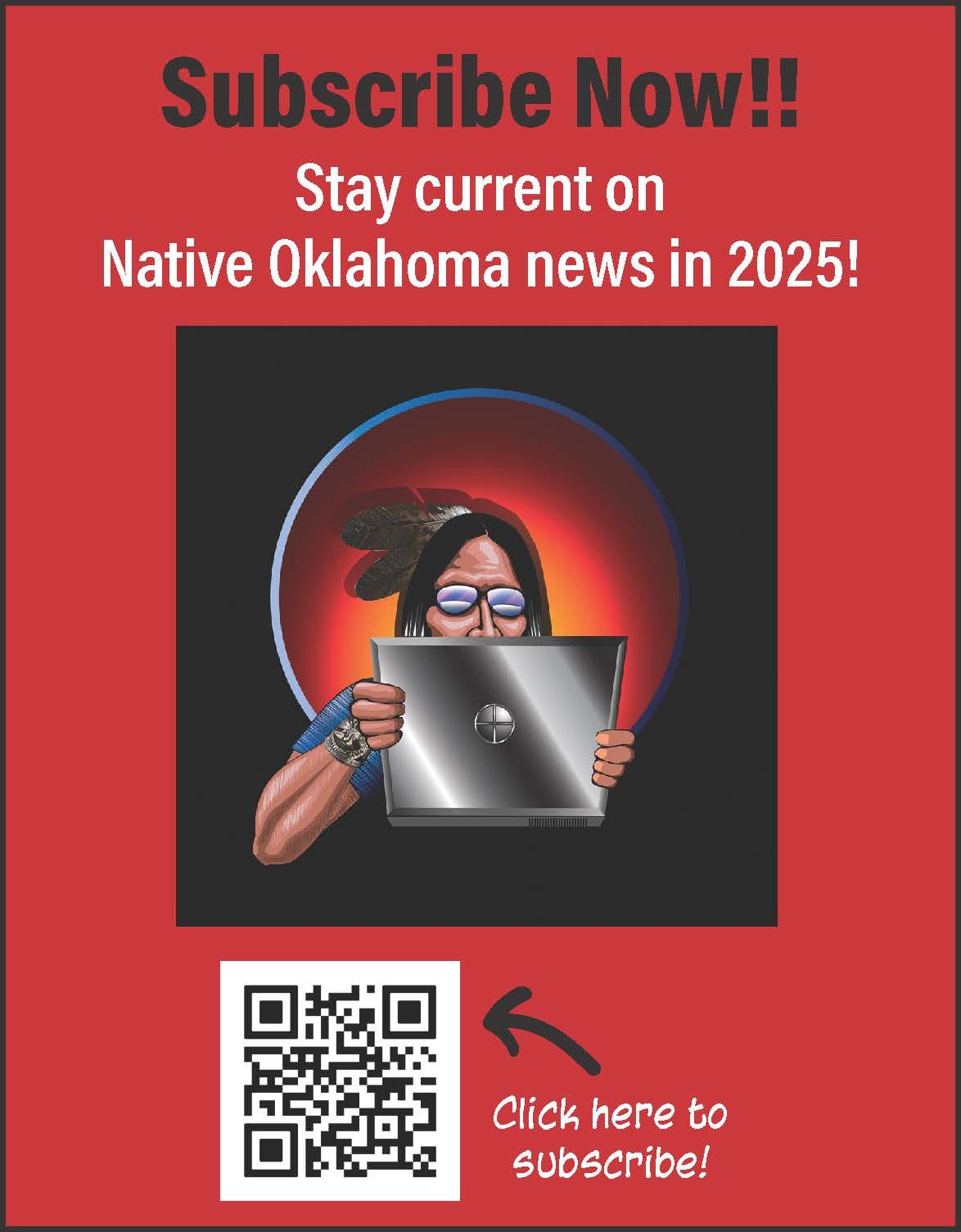

ICYM: Ernest L. "Ernie" Stevens Jr., tribal gaming leader and youth advocate, dies at 66
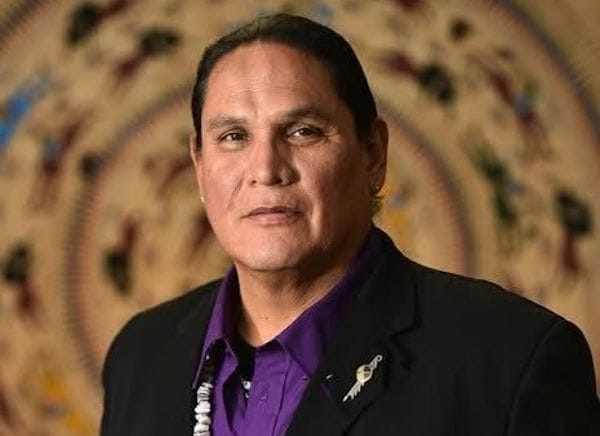
by Tribal Business News staff
Ernest L. "Ernie" Stevens Jr. — who led the Indian Gaming Association for more than 20 years and helped oversee unprecedented growth in tribal gaming — died suddenly on Friday, Sept. 26. Stevens, a citizen of the Oneida Nation of Wisconsin and chairman of the Indian Gaming Association board, was 66.
His family issued a statement late Friday acknowledging his death. “It is with heavy hearts that we announce the passing of our Dad and Papa, Ernie Stevens Jr. We ask for privacy at this time as our family navigates this profound loss.”
Stevens' death came just weeks after he was recognized in Milwaukee for leading the association during a time when tribal gaming operations generated $43.9 billion in gaming revenue during fiscal year 2024, marking the fourth consecutive year of record-breaking performance. He was re-elected in April to his 13th term as chairman of the IGA, having served in the role for 24 years.
Beyond gaming advocacy, Stevens was deeply committed to youth development. In a LinkedIn post, United National Indian Tribal Youth noted on LinkedIn that he “understood that the strength of our Nations rests in the hands of our young people, and he consistently invested his time, voice, and leadership to ensure opportunities for them to thrive.”
He served on numerous boards including the National Center for American Indian Enterprise Development, the Nike N7 Foundation, the Center for Native American Youth and the Native American Advisory Board for the Boys and Girls Club of America.
Stevens served as an elected councilman of the Oneida Nation from 1993-1999 and as first vice president of the National Congress of American Indians. His influence extended across political boundaries, with Washington State House Speaker Pro Tem Chris Stearns calling him “a lion of a man” and “an inspiration in recovery” whose “faith in his fellow humans” was extraordinary.
Before his career in tribal leadership, Stevens was an accomplished athlete. In 1975, at age 16, he co-founded the Soaring Eagle Boxing Club in Oneida with renowned boxer Louie Askinette. He was a four-time consecutive state heavyweight champion from 1976-1979 and a two-time National Heavyweight Champion in 1977 and 1978.
Stevens earned multiple honors throughout his career. He was inducted into the National Indian Athletic Association Hall of Fame in 2008, the Boys & Girls Club Alumni Hall of Fame in 2012, and became a Lifetime Member of the American Indian Higher Education Consortium's Alumni Association in 2013. In 2015, he was inducted into the American Gaming Association's Gaming Hall of Fame.
Mark Powless, chairman of the Oneida Gaming Commission, honored Stevens in August, saying: “From the boxing ring to the boardroom, in his career, he has demonstrated strength, vision, and resilience that uplift tribal communities nationwide. His leadership has advanced tribal gaming and empowered tribal governments.”
Stevens received an associate's degree from Haskell Indian Junior College in 1983, a bachelor's in criminal justice from Mount Senario College in 1996, and a master's in management from the University of Phoenix in 2021, according to his bio on the North American Indigenous Athletics Association. Haskell University honors his legacy by hosting the annual Ernie Stevens, Jr. Classic basketball tournament.
He and his wife, Cheryl, were married for more than 45 years. Stevens leaves behind a transformational legacy in tribal sovereignty advocacy, youth mentorship, and economic development that helped secure billions in revenue for tribal communities across the nation.
Native News Online provided reporting to this story.

Native American Athletic Foundation and Minnesota Vikings announce annual Native All-American Football Game

In Partnership with the Minnesota Vikings and the NFL, the Native American Athletic Foundation Announces Annual Native All-American Football Game and Camp at U.S. Bank Stadium
MINNEAPOLIS – Seventy of the nation’s top Native American high school athletes will be selected to participate in the 2025 Native All-American Football Game, taking place on Sunday, December 14, 2025, at U.S. Bank Stadium, home of the Minnesota Vikings. The event is produced by the Native American Athletic Foundation (NAAF) in partnership with the Minnesota Vikings and the National Football League (NFL). This marks the fourth year of NFL partnership and the third time the Vikings have hosted (previously in 2022 and 2023) a similar game.
The Native All-American Football Game and Camp will unite athletes from across the United States for elite coaching, college preparation, leadership development, life-skills training, and mental wellness tools—equipping them for success on and off the field. Applications are open at NativeAthletes.org.
As part of the weekend’s programming, the NAAF will also host a Native Female Flag Football Clinic on Saturday, December 13, 2025. Open to girls in grades 6–12, the clinic will feature skill development, leadership sessions, and mentorship from collegiate coaches, former NFL players, and community leaders—demonstrating NAAF’s commitment to expanding opportunities for Native girls in sports while promoting health, confidence, and leadership. For more information, please check our Facebook page and website for updates.
Coaching Leadership
• Athletic Director: Derek Fine
A proud citizen of the Cherokee Nation, Derek Fine is a former NFL tight end who played collegiately at Kansas—serving as team captain, earning the Gale Sayers Award for courage, and helping lead the Jayhawks to a 12–1 season capped by an Orange Bowl victory. Drafted in the fourth round by the Buffalo Bills in 2008, he also had stints with the St. Louis Rams and Houston Texans.
• Head Coach: Ahman Green
A citizen of the Choctaw Nation, Ahman Green is a legendary NFL running back, a four-time Pro Bowl selection, and the all-time rushing leader for the Green Bay Packers. Following a 12-year NFL career, he transitioned into coaching and esports, serving as Head Esports Coach at Lakeland University, where he built playoff and championship-caliber teams.
• Head Coach: Levi Horn
An enrolled member of the Northern Cheyenne Nation, Levi Horn began as a standout tight end in Washington state before excelling as an All-American offensive tackle at the University of Montana. Signed by the Chicago Bears in 2010, he later became a motivational speaker who inspires Native youth through outreach and storytelling.
“We are excited and honored to partner with the Minnesota Vikings and the NFL to make an impact in the lives of Native athletes,” said Michael Stopp, Executive Director of NAAF. “Our organization was founded to use sports as a platform to develop the next generation of leaders in Indian Country. We are also proud to expand our programming this year by hosting a Flag Football Clinic for Native girls in conjunction with the All-American Game.”
“The support and partnership with the Native American community in Minnesota and surrounding states has always been important to the Vikings organization,” said Brett Taber, Minnesota Vikings Vice President of Social Impact. “We’re proud to welcome the Native All-American Game back to U.S. Bank Stadium again this season to provide a memorable game and experience for all.”
For many participants—traveling from Tribal reservations and rural communities—the chance to compete on the same field as NFL professionals at U.S. Bank Stadium provides a once-in-a-lifetime experience that reinforces their commitment to athletics, academics, and community leadership.
“The NFL proudly supports the Native All-American Game. This game is a great opportunity for young Native American players to showcase their talent, teamwork, and dedication on the field, embodying the values of sportsmanship and community pride,” Anna Isaacson, SVP Social Responsibility, NFL.
The Native American Athletic Foundation, a 501(c)(3) non-profit organization, is dedicated to creating educational and athletic opportunities for Native youth. Through its programs, NAAF strives to build resilience and character in student-athletes while preparing them to become leaders in their Tribal communities.
Eligibility & Application:
To be considered for the Native All-American Game, athletes must:
• Be an enrolled member of a federally recognized American Indian Tribe
• Be a high school senior who has completed their final football season
Applications are now open at https://nativeamericanathleticfoundation.org/player-application/
Photo cutlines:
- Group photo of 2024's Native All-American Teams, Wa'Ya and Ta'Tanka
- Team Wa'Ya celebrates a big play in the 2024 Native All-American Football Game
About the Native American Athletic Foundation:
The Native American Athletic Foundation is a non-profit 501(c)3 dedicated to providing opportunities for Native youth to excel in sports, education, and leadership. Through camps, mentorship, and community-building initiatives, the foundation inspires young athletes to achieve their full potential and become leaders of character in their communities. Learn how to make a difference by supporting the next generation of Native athletes and leaders by visiting nativeathletes.org.

How one tribal nation in Oklahoma is combating uncertainty in federal support for food
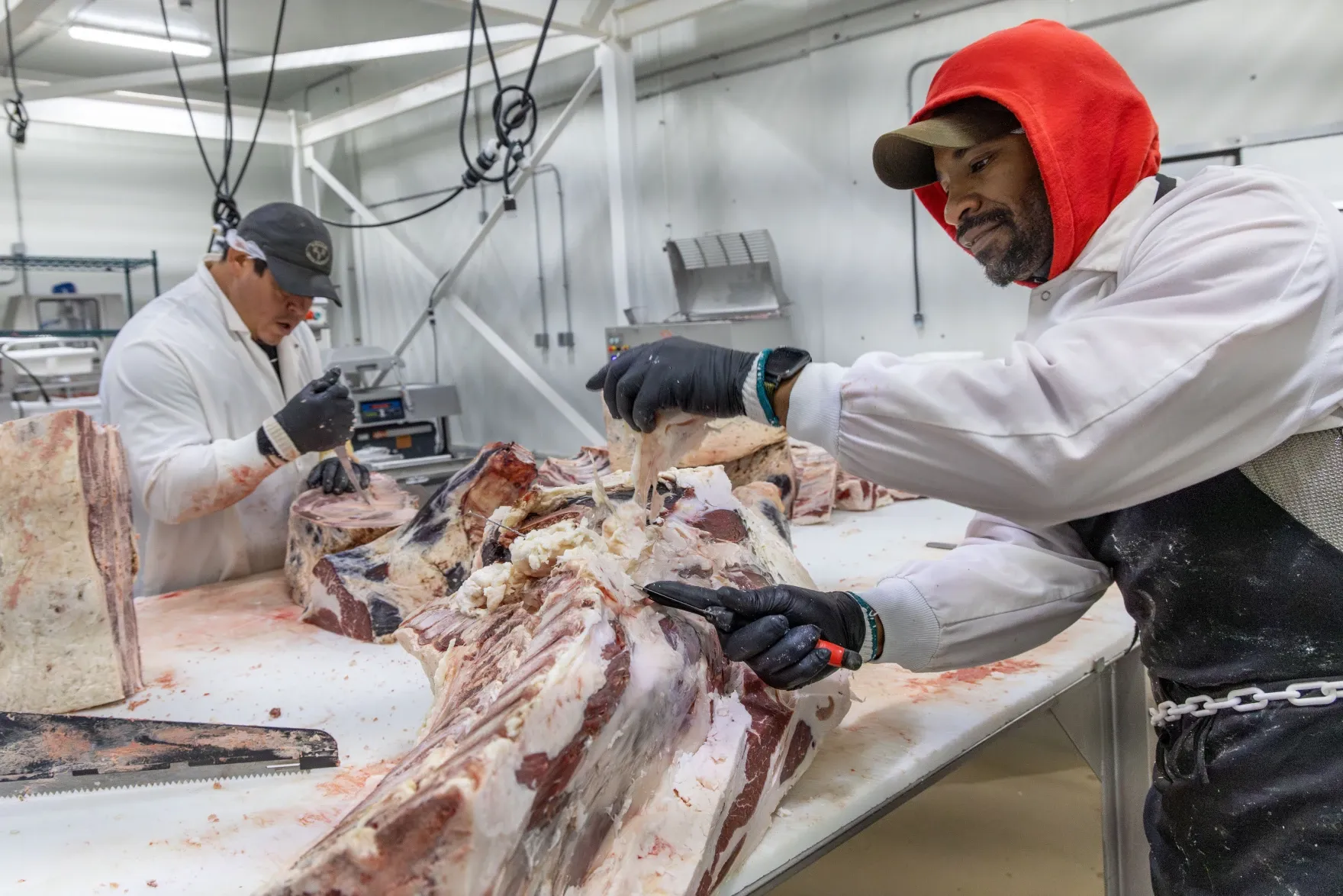
Tribal nations in Oklahoma have historically been leaders in getting food to hungry people — both native and non-native. But uncertainty created by federal funding changes is causing concern for leaders of the Osage Nation and other tribes.
Workers are busy cutting up meat as plant manager Cole McKinney walks through the Osage Nation’s processing facility, Butcher House Meats, in northeast Oklahoma.
“Today is a slower day,” McKinney said as he enters a chilly room of hanging meat.
Nevertheless, the nation’s officials say demand to process animals and access food through the facility’s retail counter has grown since it opened.
During the COVID-19 pandemic, the Osage Nation faced supply chain issues in its food packing and processing systems. It was difficult to move animals through the system, while meat processing plants had to halt or slow down production.
The 19,000-square-foot facility in the Osage Nation, opened in 2021, is designed to address these issues. It processes the nation’s beef and bison, takes orders from customers and has a retail counter. Other tribal nations in Oklahoma, such as the Cherokee Nation and Quapaw Nation, also have a meat processing plant.
Butcher House Meats is located in a food desert, McKinney said.
“Having a facility for the surrounding communities is a very big deal, so they can come get safe, quality food and also, locally grown,” McKinney added. “It’s a big asset to everybody around here.”
This year, the federal government has taken actions ranging from cutting jobs at the U.S. Department of Agriculture to pausing or canceling grants and programs affecting nonprofits, producers and tribal nations in Oklahoma.
Nationwide, more than 15,300 U.S. Department of Agriculture employees took voluntary retirements or participated in the Deferred Resignation Program, which allows eligible employees a paid transition period to find a job in the private sector, according to a USDA press release.
The federal changes have not affected Butcher House Meats, which was originally funded with federal dollars but has not received federal grants recently. But money is tight.
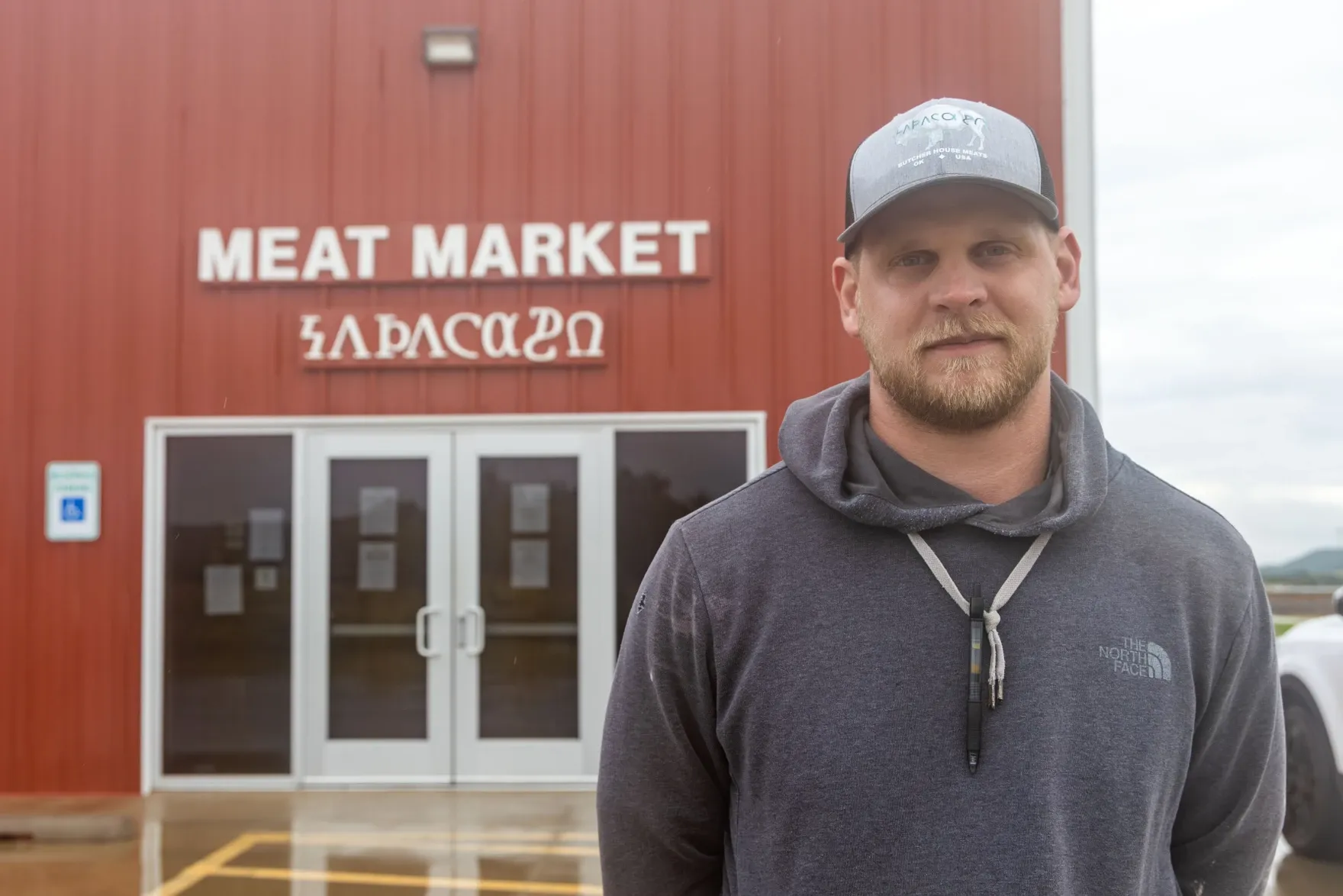
“We need more storage. That's just another very, very large expense,” McKinney said. “And without funding from a grant or anything like that, it's really hard to free up money.”
McKinney said grants that fit the needs of the plant are not available. While processors were eligible for some grants in the past few years, they had strict conditions, and it was difficult to find the right program to apply to, he added.
If there are grants available, the nation will continue to go after them, said Jann Haymann, Osage Nation Secretary of Natural Resources.
“At least we're always trying.”
A tough number to pin down
In the past, Osage Nation programs for elders or youth had no source for meat.
In response, the tribe opened Harvest Land, a farm providing locally grown produce, in 2020, and Butcher House the next year. Both were funded through the Coronavirus Aid, Relief and Economic Security (CARES) Act, according to Hayman.
The pandemic exposed existing problems in the food system and prompted more food sovereignty work.
“I think probably our food systems were a little shaky to begin with and so it didn't take much to completely cause a breakdown,” Hayman said.
Carly Griffith Hotvedt, executive director of the Arkansas-based Indigenous Food and Agriculture Initiative, said that determining the number of canceled or paused federal agriculture and food-related grants and programs is challenging.
“That number has been very, very difficult to ascertain because there has not been reporting or data collection or dissemination by the federal government,” Hotvedt said. “Any sort of data collection from outside groups has been made available through the DOGE (U.S. Department of Government Efficiency) initiative or through self-reporting and third-party collection,” which is “not a complete picture.”
She said there’s also uncertainty around the status of funding from federal grants or programs, and some tribes or tribal organizations are in limbo, as federal agencies reshape grant programs, ending some while extending others. The USDA did not respond to KOSU in time for this story.
Tribes and tribal nations in Oklahoma are unique in size and resources, and have different experiences with the current federal environment.
For instance, recent federal actions concerning agriculture and food assistance pose setbacks to the Cherokee Nation’s efforts to serve citizens and producers, Cherokee Nation Principal Chief Chuck Hoskin Jr. said in a statement sent to KOSU.
The actions have also reached organizations such as the Intertribal Agriculture Council. Abi Fain, the organization's chief legal and policy officer, said it has seen a couple grants canceled or changed.
The council began in the 1980s during the farm crisis to support and advance tribal agriculture. It was involved in the now-cancelled USDA Partnerships for Climate-Smart Commodities Program, and Fain said payments were going directly to cattle ranchers to gain a better understanding of soil data in support of regenerative agriculture.
The council has a far-reaching network and while she said the recent federal actions causes uncertainty, the organization is still providing services to support Indigenous producers.
The organization is also watching to see if there will be more reductions in the federal workforce because the USDA and the Bureau of Indian Affairs (BIA) under the Department of the Interior are critical to providing what producers need.
USDA houses multiple programs ranging from farm operating loans to conservation. Fain said if producers operate on tribal trust land, they must go through the BIA to access certain USDA programs.
“And if there aren't individuals to process those requests in a timely way, that can result in a producer not getting the paperwork they need from the Department of the Interior to even make it through the door at USDA to try and become eligible for a program,” Fain said.
“We are looking at what resources are available to farmers and ranchers to ensure that they can weather policies that may impact their bottom line,” Fain said.
For Fain, food security rests on local agriculture businesses.
The latest Government Shutdown
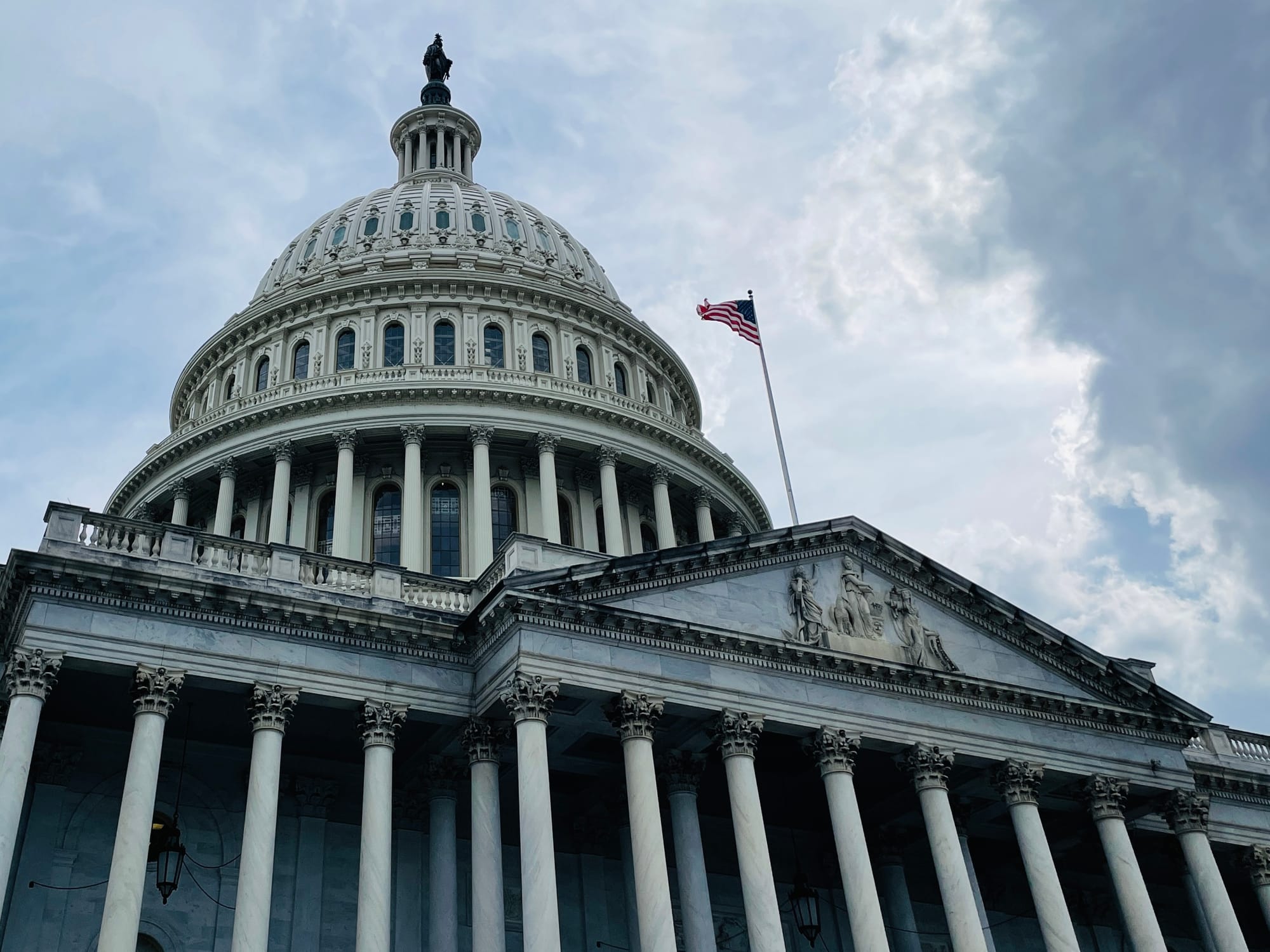
Steve Wyett- Chief Investment Strategist, BOK Financial
“History has shown government shutdowns to be relatively immaterial for the broad economy and capital markets. Most are resolved quickly and little has slowed the increases in government spending. The rhetoric and posturing by the Democrats and Republicans going into this shut down is similar to past versions.
Both are claiming the high ground on their stances and point to the intransigence of the “other side” as forcing the government shut down. The calculus is about how the court of public opinion will play out and which party might benefit. This shut down does feel a bit different as the range of possible responses from President Trump seems a bit wider than past events.
Talks about significant permanent cuts to government agency employment mean at least some furloughed workers will not have a job and back pay to which to return. This raises the stakes and could add additional pressure to reach a resolution quicker.
Investors would be well served to avoid any major changes to their plan based on the government shut down. History shows these events do not derail or materially slow the economy as little has slowed the ongoing increase in government spending. A sell-off in the markets of any magnitude should be viewed opportunistically.”
Matt Stephani-President, Cavanal Hill Investment Management
“Government Shutdown: What It Means for Services and the Economy
With the federal government currently shut down, many essential services will continue to operate. Programs such as Social Security, Medicare, and Medicaid will still issue payments, though new enrollments and other administrative processes may be delayed. Air travel will remain functional, with TSA agents and air traffic controllers continuing to work—albeit without pay—which could result in longer wait times at airports. Areas that might see immediate disruption include National Parks, which may close or operate with limited staffing, Federal Courts, where case processing could slow, and new Applications for passports, FHA loans, and certain food assistance programs like WIC, which may be paused or delayed due to staffing shortages.
Economic Implications
Historically, federal employees have received back pay once a shutdown ends. If this shutdown is brief, and we believe it likely will be, economic activity may simply shift from October into November or December as wages are restored following the shutdown. Regions with a high concentration of federal workers may feel a more pronounced short-term impact for services as employees begin missing checks, but past shutdowns have shown minimal long-term economic consequences.
Market Perspective
Financial markets are expected to continue operating normally. While short-term volatility may increase, long-term investors are encouraged to maintain discipline and avoid making impulsive portfolio changes. Emotional reactions during uncertain periods often lead to suboptimal decisions. Staying focused on long-term goals remains the most prudent approach.”
